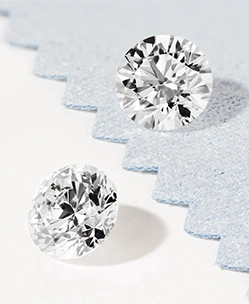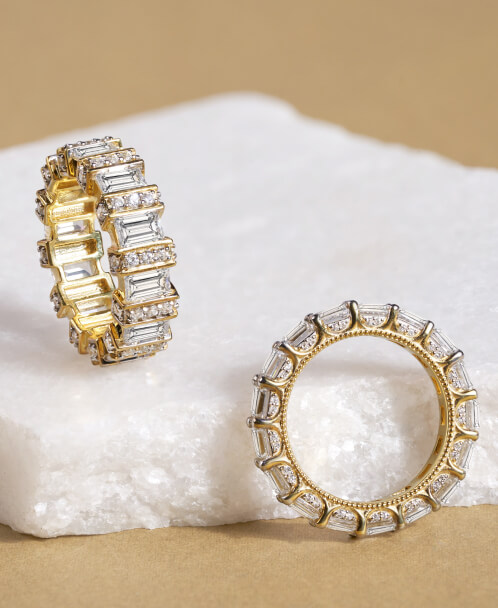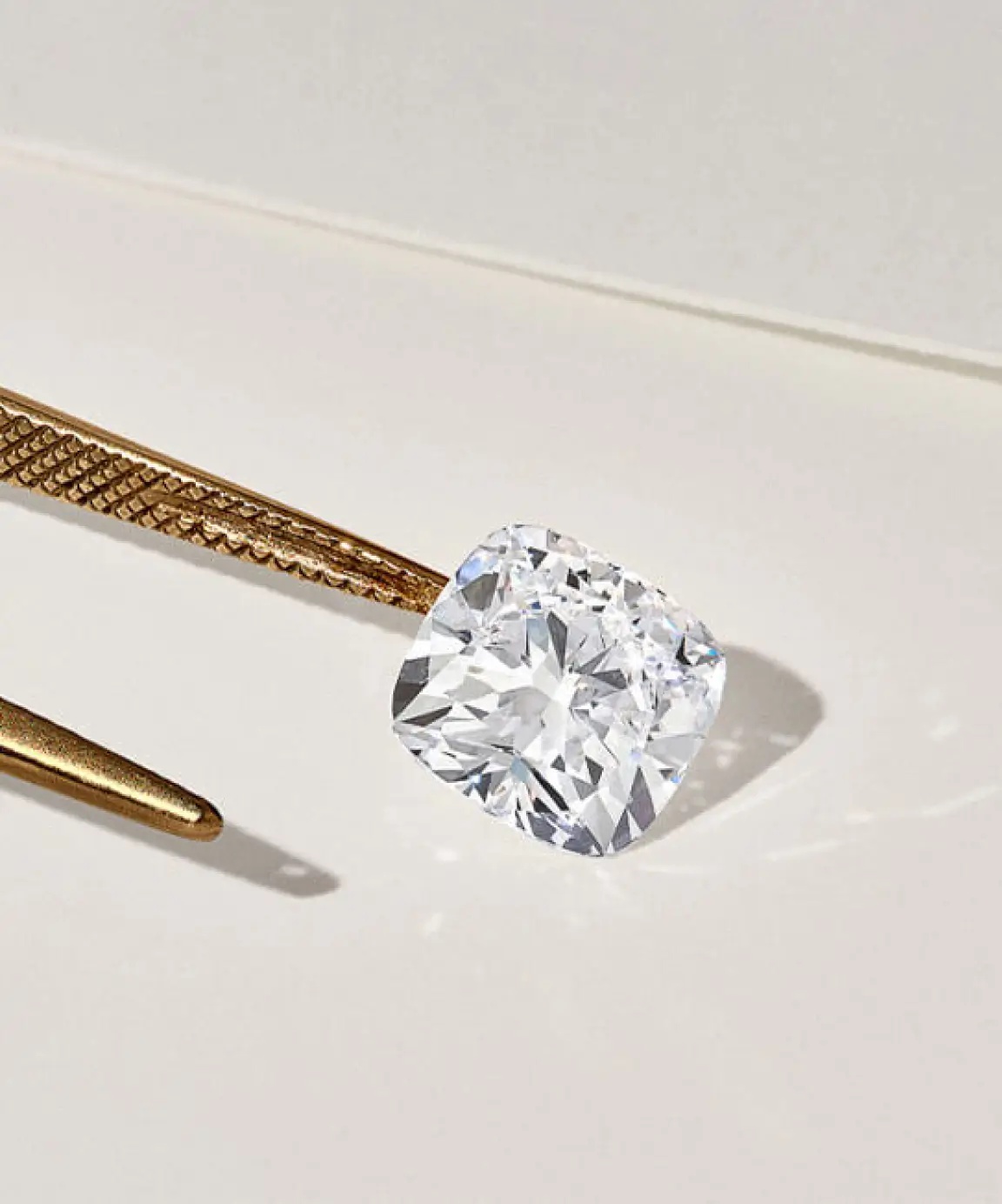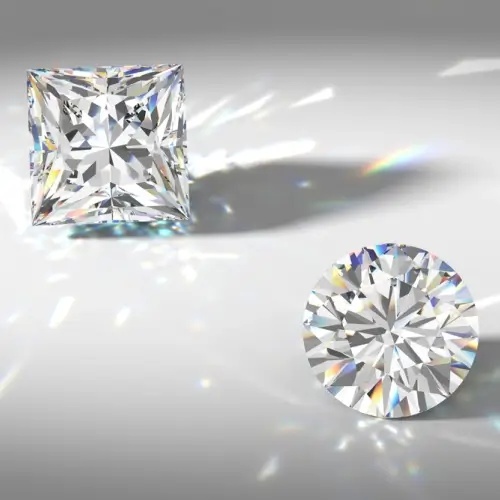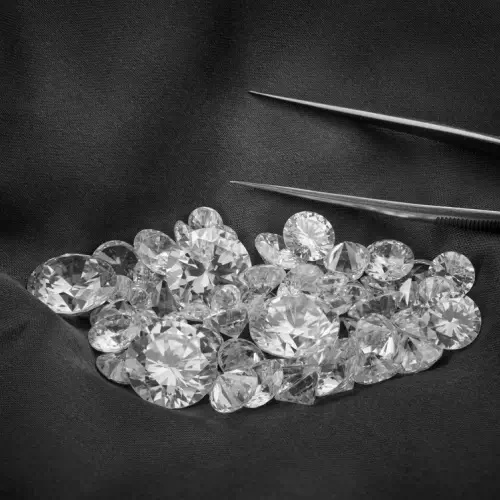For a long time, diamonds have been associated with love, opulence, and grand social status. As consumers become more aware of globally rising environmental concerns and unethical practices, the diamond industry is facing high retaliation for its mining practices. At the same time, lab grown diamonds are gaining rapid popularity as a sustainable and conflict-free alternative of the same. Produced in a lab using advanced technology that mimics the natural process of diamond formation, these stones are identical to mined diamonds in their physical, chemical and optical properties.
Let’s explore how lab diamonds are gaining more acceptance over time and this industry is entering its growth stage, all set to revolutionize the jewelry sector on the whole!
Table of contents
Lab Grown Diamonds: The Sustainable & Ethical Alternative
Lab diamonds or man-made diamonds are obtained by manufacturing diamonds in a laboratory rather than being mined from the earth. They use advanced technology that simulates the natural process of diamond formation through two primary procedures: High Pressure High Temperature and Chemical Vapor Deposition (HPHT and CVD).

SHOP LAB DIAMONDS
HPHT is one of the methods used to create lab grown diamonds. In this process, a small diamond seed is placed in a press which is capable of generating high pressures and high temperatures. The press is then heated up to over 1,500 degrees Celsius and exposed to extreme pressure of over 1 million pounds per square inch. Under these extreme conditions, carbon is introduced into the press which begins to crystallize around the diamond seed. As the carbon crystallizes, it forms a larger diamond around the seed.
CVD is another method used to create lab grown diamonds. In this process, a mixture of carbon-rich gasses like methane or acetylene is inserted into a vacuum chamber. The chamber is then heated, typically to around 800-1,200 degrees Celsius, and the gasses are ionized using energy from a microwave or other source. This creates plasma, which is a highly energized gas that contains free carbon atoms. The CVD process allows for more precise control over the diamond's growth, enabling manufacturers to create diamonds with specific sizes, shapes, and qualities. It also uses less energy and produces less waste than the HPHT method, making it a more environment friendly option.
Lab diamonds are identical to natural ones in their formation and composition. They are graded using the same components as mined diamonds and are also available in a range of sizes, shapes, and colors.
Lab Grown Diamonds: Advantages over Mined Diamonds
Lab created diamonds offer a range of benefits over traditionally mined diamonds. Firstly, these are a sustainable and ethical alternative. Manufacturing these stones in a laboratory requires high-end technology but it does not involve any environmental damage or social harm that is often associated with diamond mining. Secondly, manufacturing diamonds in a laboratory makes them more affordable compared to mined diamonds and as a result, they become more accessible to a wider range of consumers.

Thirdly, lab diamonds are nearly identical to natural diamonds in terms of their structure and form. This means that manufacturing them in a laboratory offers the same quality of diamonds as the natural ones. Moreover, the lab diamond industry is also inching closer towards establishing a more transparent and traceable supply chain in their system. This helps to build consumer trust and confidence in lab grown diamonds.
Lab Grown Diamonds: The Industry's Growth & Challenges
In recent years, the lab grown or man-made diamond industry has experienced significant growth. One of the key drivers of this growth is increasing consumer demand for sustainable and ethical lab diamonds. Since manufacturing these stones in a laboratory is not associated with negative impacts of diamond mining, such as deforestation, pollution, and human rights violation, they are considered the best ethical option. Consumers seek this alternative to traditionally mined diamonds when they become aware of the environmental, social & economic impact of the latter.

Moreover, the increasing availability and affordability of lab grown diamonds have made them more attractive too. As technology continues to improve and the production costs decline, we see an evident rise in the demand for lab diamonds. They aim to fit within the budget of a wider range of customers, especially among younger generations who prefer cost-effective options.
Another factor pushing the growth of the lab diamond industry is innovation in its production techniques. Advanced technology has enabled lab diamond manufacturers to produce stones that are very identical to natural diamonds, so much that it is extremely difficult to distinguish between the two.

Further, as this industry enters a new phase of evolution, there are a number of trends and developments for everyone to watch. One of these is the increasing use of lab grown diamonds in industrial and technological applications due to their hardness, durability, and thermal conductivity. These diamonds are used in a range of industries including electronics, aerospace, and healthcare. As their demand in the industrial applications rises, it creates fresh growth prospects for the entire industry.
Another trend to watch is the emergence of lab grown colored diamonds. Traditionally, natural colored diamonds such as green, black, red, purple, and orange are much rarer and therefore more valuable. However, since the emergence of lab grown diamonds, one can easily achieve the desired hues when it comes to these precious stones. This is gradually leading to new opportunities for growth in the lab diamond industry.
Despite so many benefits and opportunities offered by lab grown diamonds, there are still challenges to overcome. One of these is consumer education and awareness. While lab diamonds are becoming increasingly popular, many consumers still have misconceptions about them. They may not fully understand the differences between lab grown and natural diamonds. This highlights the need for continued efforts to educate consumers about the benefits and value of lab grown diamonds.
The lab diamond industry is entering a promising future fueled by rising demand for sustainable and ethical products, technological advancements, and increased transparency & accountability. Monitoring industry trends and challenges while capitalizing on opportunities for growth and innovation adds a positive impact on the growth and development of the lab diamond industry. With its potential to capture a high segment of consumers with its superior attributes, it is set to revolutionize the entire diamond industry.
Lab Grown Diamonds: Shaping the Future of Tomorrow
Lab diamonds are likely to gain more popularity and market share in the coming years. As technology continues to evolve and these diamonds become increasingly cost-effective, they are poised to disrupt the traditional diamond industry by becoming more accessible and affordable.

At Friendly Diamonds, we understand that while some consumers still value the rarity and symbolic significance of mined diamonds, lab grown diamonds offer unparalleled quality and value. With our commitment to staying ahead of the latest trends and developments in the industry, we are your go-to source for flawlessly crafted lab diamonds that meet your every need. Join us in embracing the future and make your conscious choices today with Friendly Diamonds!
